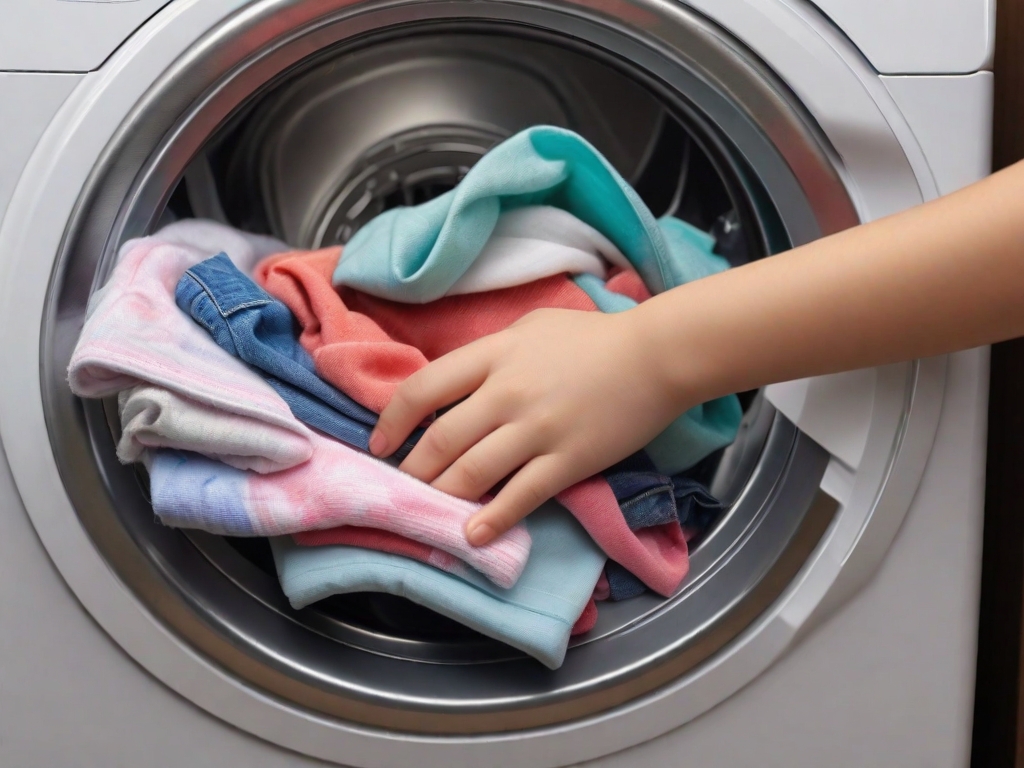How to Remove Stubborn Stains from Your Washing Machine: A Complete Guide
Discover the surprising secrets to tackle stubborn stains in your washing machine and keep it sparkling clean effortlessly!

Table of Contents
When it comes to doing laundry, your washing machine is a trusted companion.
However, over time, you may notice stubborn stains appearing in your machine.
These stains not only affect the cleanliness of your clothes but can also impact the overall performance of your washer.
We will discuss the common types of washing machine stains, how to identify them, and most importantly, how to remove them effectively.
Related Articles : How to Remove a Mustard Stain
How to remove common types of washing machine stains
HE detergent stains
High-Efficiency (HE) detergent stains can be a common issue in washing machines. These stains are typically caused by the undissolved detergent residue or excess detergent used.
To remove HE detergent stains:
- Run a cycle with hot water and no laundry, using a cup of distilled vinegar or bleach instead of detergent.
- Wipe the interior of the washing machine with a cloth soaked in a solution of vinegar and water.
Rust stains
Rust stains can occur when small metal objects are left in pockets and go through the wash cycle. Additionally, if your washing machine has rusty parts, it can lead to stains on your clothes. To remove rust stains:
- Run a cycle with hot water and a rust stain remover product specifically designed for washing machines.
- Remove any rusted parts or components and clean them thoroughly before reinstalling.
Bleach stains
Bleach stains are another common issue in washing machines. These stains occur when bleach comes into contact with fabrics or surfaces that are not bleach-safe. To remove bleach stains:
- Apply a mixture of water and hydrogen peroxide to the stained area and let it sit for a few minutes before rinsing.
- If the stain persists, try using a color-safe bleach alternative or a stain remover specifically designed for bleach stains.
Dye transfer stains
Dye transfer stains occur when colors bleed onto other fabrics during the wash cycle. This can happen if you mix different colored items without taking precautions. To remove dye transfer stains:
- Re-wash the affected clothes separately with color-safe bleach or a product specifically designed to remove color transfer stains.
- Sort your laundry properly, separating dark, light, and vibrant colors to prevent future dye transfer.
Fabric softener stains
Fabric softener stains can leave greasy-looking patches on your clothes and in your washing machine. These stains are caused by the buildup of fabric softener residue. To remove fabric softener stains:
- Wipe the interior of the washing machine with a cloth soaked in a solution of vinegar and water.
- Use an old toothbrush or scrub brush to scrub away any residue from the fabric softener dispenser.
How to prevent washing machine stains

Use the correct amount of detergent
Using excessive detergent can lead to residue buildup and stains. Follow the manufacturer’s instructions on the detergent packaging for the proper amount to use based on your load size.
Choose the right detergent for your washing machine
Ensure that you are using a detergent that is suitable for your specific washing machine type (HE detergent for high-efficiency machines) to minimize the risk of stains.
Watch on youtube.com : Clean washing machine
Clean your washing machine regularly
Regular cleaning of your washing machine can help prevent stains. Run a cycle with hot water and a cleaning agent specifically designed for washing machine maintenance.
Sort your laundry properly
Separating dark, light, and vibrant colors can help minimize the risk of dye transfer stains. Sort your laundry carefully and double-check pockets to prevent any objects from causing rust stains.
Avoid overloading your washing machine
Overloading your washing machine can lead to incomplete rinsing and inadequate detergent distribution, increasing the chances of stains. Follow the recommended load capacity for your machine.
Conclusion
Stubborn stains in your washing machine can be frustrating, but they are not impossible to deal with.
By identifying the type of stain and using the appropriate cleaning methods, you can successfully remove these stains and ensure that your laundry is clean and stain-free.
Additionally, taking preventive measures such as using the correct detergent and cleaning your machine regularly can help minimize the occurrence of stains in the future.
Troubleshooting tips for removing difficult washing machine stains
For particularly challenging stains, consider using specialized stain removers or seeking professional assistance. Additionally, you can try pre-treating the stains with specific products or seeking advice from the manufacturer or an appliance repair expert.
FAQs about washing machine stains
Q: Can I use household cleaning products to remove washing machine stains?
A: It is recommended to use cleaning products specifically designed for washing machine maintenance to avoid damaging the appliance.
Q: How often should I clean my washing machine?
A: It is recommended to clean your washing machine every 1-3 months, depending on usage.
Q: Can I use bleach to remove all types of stains?
A: Bleach is effective for certain types of stains, such as mold or mildew. However, it may not be suitable for removing other types of stains, such as rust or dye transfer.
